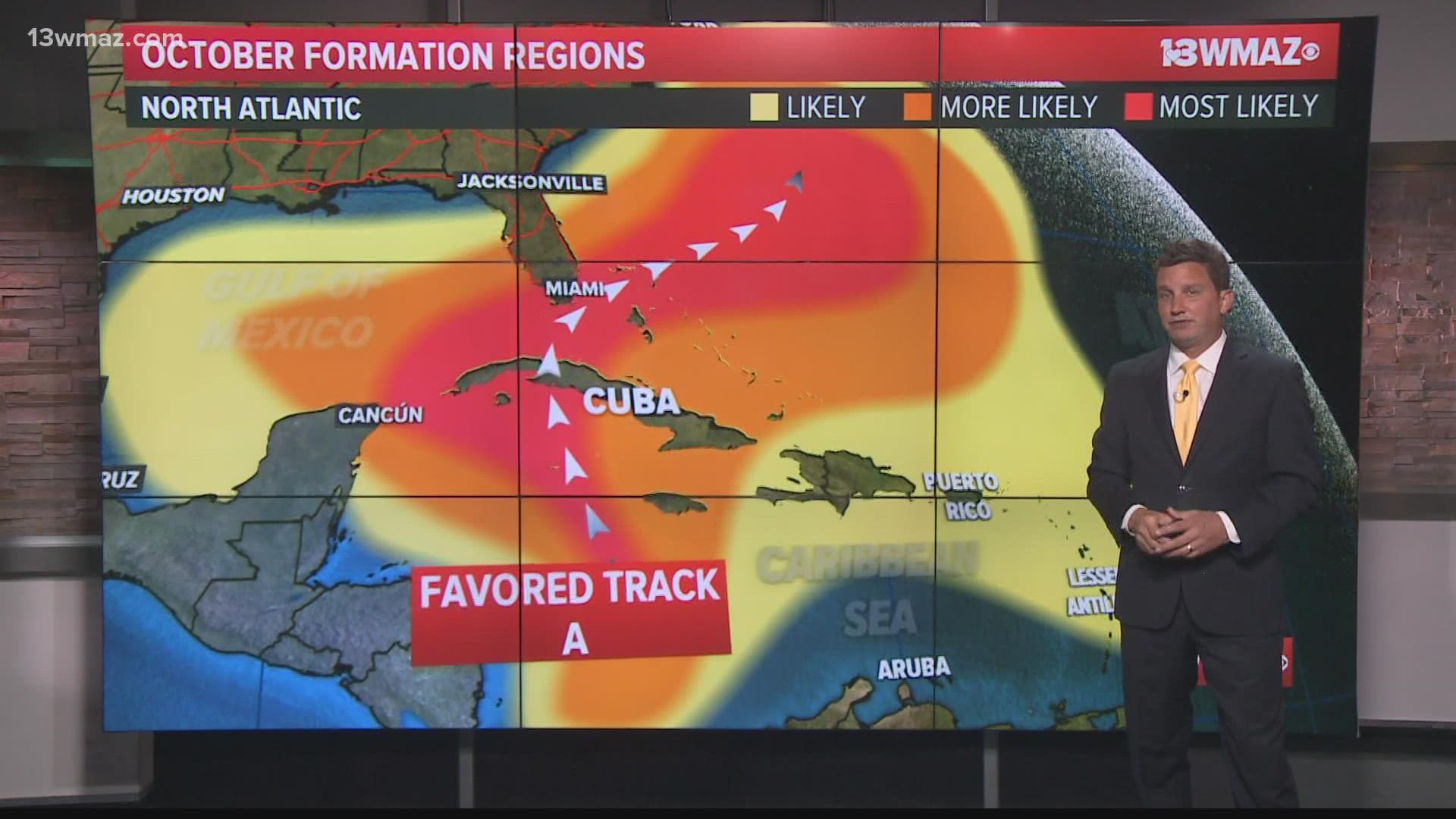MACON, Ga. — Hurricane season runs for six months from June to November, but did you know meteorologists watch different regions of the Atlantic in different months for development?
In the last seven years, we’ve seen storms develop in the days leading up to the season.
In June, we aren’t necessarily watching waves rolling off Africa. Instead, we’re watching for development in the Bay of Campeche, the Gulf of Mexico, the Northern Caribbean, and off the Atlantic coast. One favored track takes storms into Texas, while another curves storms through the Gulf and up the Atlantic coast.
In July, the storm tracks from June are very similar, but we also begin to watch areas near the Bahamas. One of the favored tracks is very similar to the one Alberto took, which of course made landfall in July. There is another favored track, which sends those storms up the Atlantic Seaboard. We typically don’t see many effects when these storms follow the trajectory around high pressure in the Atlantic and stay off the coast.
August is when things begin to really heat up. The hot spot for development is out in the islands as African waves begin to traverse the Atlantic. Oftentimes, these storms make their way through the Caribbean and into the gulf. They can also go north of the islands, into the Bahamas and then into the U.S. – but they also curve around the ‘Bermuda high.’
September is the peak of hurricane season. Just about everywhere in the Atlantic is likely for tropical development. Storms that come from Africa can steer clear of the Caribbean and find their way along the East Coast. Others can make it into and form in the Caribbean, eventually ending up in the gulf.
In October, cold fronts begin coming out of the Arctic again, steering a lot of storms northwest. The warm Atlantic waters still make for favorable conditions, just with different steering mechanisms. Most often we see those storms run into fronts and turn.
In November, waters begin to cool down with fronts steering storms away even more. This is when we can begin to relax in Central Georgia.

